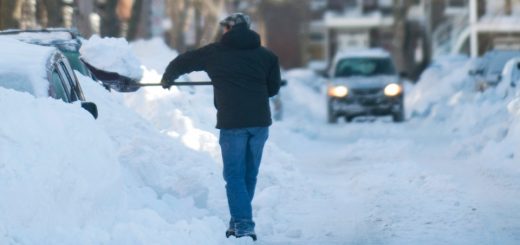Staying safe while operating a motor vehicle is not just the responsibility of the other drivers around you, it is primarily your responsibility. Whether you’re taking care of your own car, making sure you are operating your vehicle safely, or being aware of how others are operating their vehicles around you, the things you do while driving can make your trip a safer one for you and those around you.
Buckle up
One of the biggest safety tips is also a law. Always wear a seat belt. In Ontario, all drivers and passengers are required to wear a seat belt at all times. Children 16 years of age and older are responsible for wearing their own seat belt. However, young children are the responsibility of the driver and should be placed in the proper car seat or seat belt. The fine for failing to wear a seatbelt can range from $200 to $1,000, and you will receive two demerit points that will stay on your record for two years.
Only in special circumstances is a seat belt not required. Some vehicles, such as buses, large commercial vehicles, vehicles that were manufactured or imported before 1974, and vehicles assembled without seat belts in each seat are exceptions to the seat belt law. Some people are also dismissed from the seat belt law, including those that are required by their work to enter and exit their vehicle frequently (but they must travel at less than 40 km/h); a person being transported by police while in custody; rural mail carriers employed by the Canada Post; people working in or being transported by an ambulance; fire fighters riding in the rear of the vehicle while on an emergency call; taxi drivers while transporting a customer; anyone legally operating a car driving in reverse; and those that have medical certificate proving they’re unable to wear a seat belt.
Watch your speed
In addition to seat belts, following the speed limit is a safety tip, but also a law. As a general rule, drive with the flow of traffic, but no faster than the posted speed limit. Where signs are not posted showing the speed limit follow the guideline of 50 km/hr in cities, towns, and villages, and 80 km/hr in any other areas. Fines for failure to follow the speed limit are based on how many km/hr over the speed limit you were caught doing and can range from $3 to $9.75 per km/hr.
While operating a vehicle, you should try to stay as visible as possible using your lights when necessary and maintain the space between you and the vehicle in front of and behind you. The further away you are from other objects the more likely you are to be able to stop in an emergency without causing an accident.
Other drivers aren’t mind readers
Communicate with the drivers around you by using the appropriate turning signals and being certain your break lights and turn signals are in full working order. If necessary, use hand signals to show other drivers where you are going. Be sure to yield the right of way to other cars and pedestrian when required.
Being a careful, defensive driver who practices operating their own vehicle safely, as well as being aware of the surroundings and other drivers around you, can help make trips in your motor vehicle as safe as possible.







